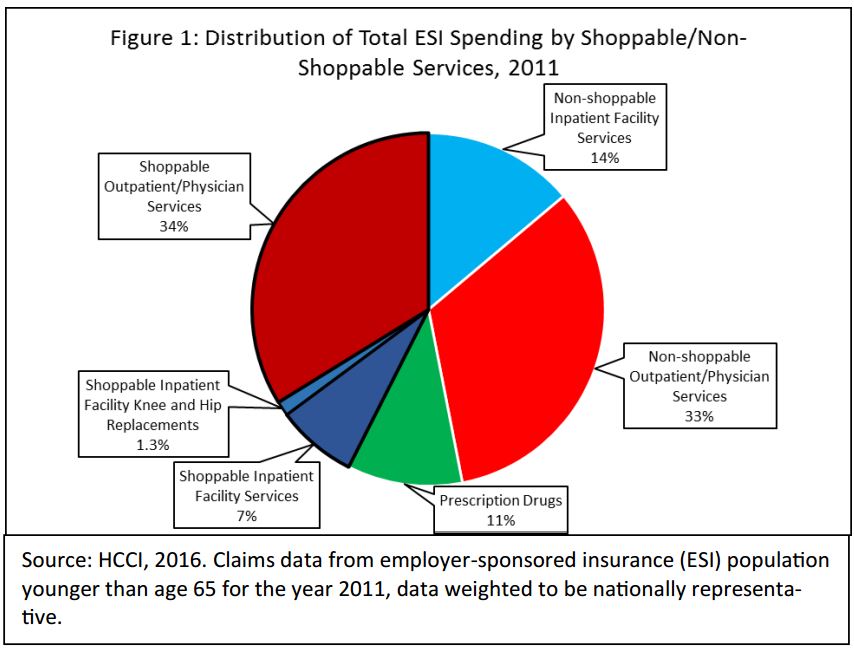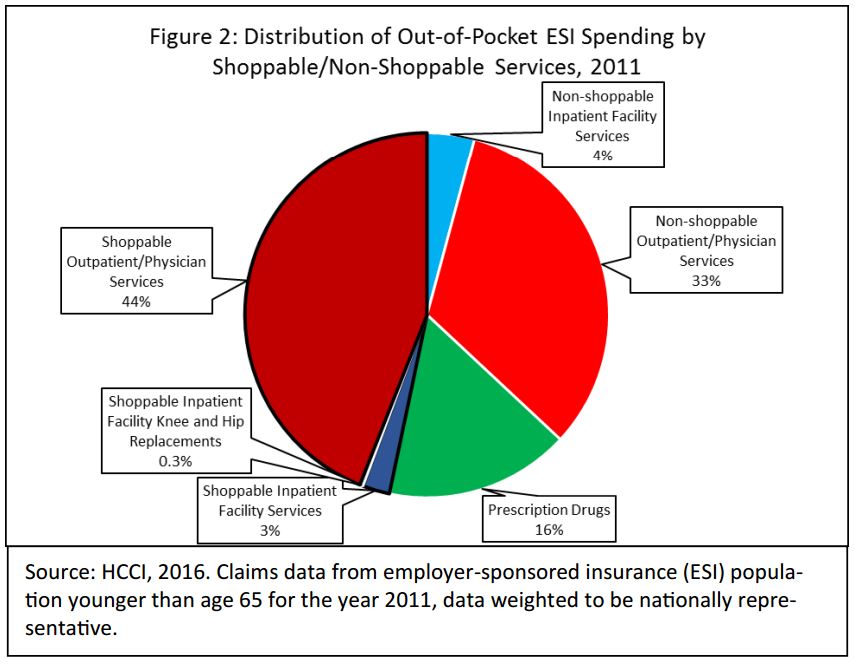Price Transparency May Lower $27 Billion in Healthcare
Price transparency or providing incentives to direct consumer behavior would actually have minimal effect on reducing healthcare spending.

- Price transparency in the healthcare industry is becoming more and more pertinent and sought after. Research has shown that there is still insufficient price transparency within the medical field including hospital services. However, a new report from the Health Care Cost Institute called Spending on Shoppable Services in Health Care reveals that offering greater price transparency so that consumers can shop for high value non-urgent medical services or products does have a “modest effect” on cutting medical spending.

While 43 percent of healthcare spending does implicate consumer shopping based on price, only around 7 percent of total medical spending is paid out-of-pocket by consumers, according to a press release from the Health Care Cost Institute.
As such, the researchers explain that price transparency or providing incentives to direct consumer behavior would actually have minimal effect on reducing healthcare spending as a whole or making medical services more affordable. The report looked at medical claims information from 2011 among people under 65 years of age with employer-sponsored health plans.
“There is not that much savings to be gained from consumer shopping for many non-emergency services,” Amanda Frost, a researcher from the Health Care Cost Institute who authored the report, stated in the press release. “While we strongly believe that consumers are entitled to price information and to know what they are going to pay prior to any health care service, we shouldn't rely on price transparency as a way to create savvy shoppers to save health care dollars.”
The study involved looking at “shoppable healthcare services,” consisting of any medical care than can be scheduled in advance. Some of the potential services may include non-emergency hip and knee replacement operations, flu shots, blood tests, colonoscopies, and urine analysis.
However, the list of shoppable medical care did not include healthcare products like prescription drugs or medical devices. The results from the report show that 57 percent of healthcare spending in 2011 does not relate to shoppable services or anything that could benefit from price transparency.
In 2011, 43 percent out of the $524.2 billion in healthcare spending was related to shoppable services. Among commercially insured individuals, 15 percent of total healthcare spending was done out-of-pocket, which amounted to approximately $81 billion.
The results also illustrate that 7 percent or $27.7 billion was spent out-of-pocket on services that could have decreased costs if greater price transparency was established and consumers gained more ability to shop around.
The majority of out-of-pocket spending amounting to 44 percent were contributed to shoppable ambulatory physician services. The way health insurance plans and benefits are developed around consumer needs often relate to the amount consumers pay out of pocket, the study stated.
Price transparency awareness “represents a real opportunity to help educate people about price variation and potentially help them make choices that save them money,” David Schleifer, PhD, Senior Research Associate at Public Agenda, told RevCycleIntelligence.com. “It may be something that gets built into price information systems. It may be something that doctors and nurses and receptionists are able to help educate people about. I don't know what the channels are but there's some work to be done.”
The report does indicate that price transparency could influence 65 percent of out-of-pocket spending among consumers looking to lower their deductibles and coinsurance payments. Additionally, price transparency won’t lower copayments associated with a health insurance plan, as these are set amounts.
The Health Care Cost Institute report outlines that shoppable outpatient and physician services comprise 34 percent of total healthcare spending while non-shoppable outpatient services consist of 33 percent of total spending. To contrast these results, non-shoppable inpatient services took up more of the cost than shoppable inpatient medical care.
The results also show that 16 percent of healthcare spending was in the form of copayments, coinsurance, and deductibles. Out of the 16 percent, 44 percent of spending was related to shoppable outpatient services.
In order to lower consumer spending, it is beneficial to price shop when choosing providers who require coinsurance payments, the researchers advised in the report. The analysis found that 27 percent of out-of-pocket spending among shoppable services related to coinsurance costs.
While there may only be a modest decrease in total healthcare spending when price transparency is instituted, the results show that “a large portion of healthcare spending every year is on services for which consumers could price-shop ahead of receiving them.” This means that out-of-pocket costs could potentially be decreased for the consumer if price shopping is established.
“Consumers are entitled to price and quality information but we need to be realistic about how much having this kind information can drive changes in the market,” Lynn Quincy from the Consumers Union said in a public statement.
The study illustrates that outpatient services vary little in price but inpatient services have more differentiation, which is where price transparency could be useful. However, knee and hip replacement surgeries had less variation in price than other inpatient services. Essentially, the researchers of the study point to the idea that employers, payers, healthcare providers, and other stakeholders should continue to target healthcare spending in more direct ways.
“Consumer shopping is important but it should not be at the fore of delivery system design. Since providers are setting the prices, it makes more sense to directly engage them and payers because they are in the best position to exert downward market pressure on prices,” David Newman, Executive Director of the Health Care Cost Institute, stated in the release.


